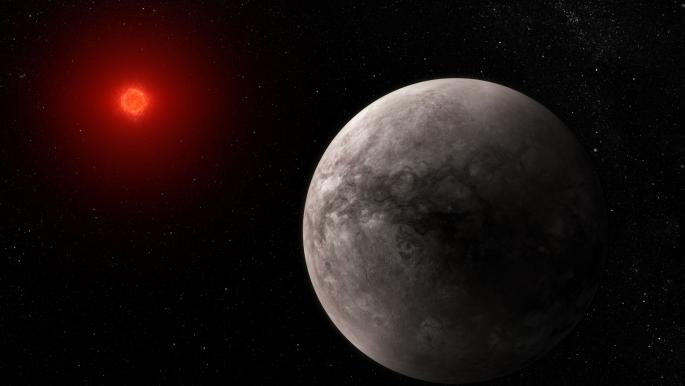
The James Webb Space Telescope has succeeded in measuring the temperature of a rocky planet 40 light-years away from our solar system, according to a study on Monday in an operation conducted for the first time.
Discovered in 2017, the TRAPPIST-1 system consists of seven planets orbiting a super-cool red dwarf star that emits twice as much heat as the Sun.
This planetary system is the main target of the James Webb Telescope, developed by the US space agency (NASA) and launched in July 2022. One of the telescope’s missions is to study the atmospheres of habitable exoplanets.
And NASA said in a statement, “+TRAPPIST-1+ is an ideal planet for testing” because it is close to the Solar System and includes only rocky planets similar to Earth.
However, knowing the characteristics of these planets is a difficult problem because, unlike the stars that orbit them, exoplanets cannot be observed from great distances. To observe it, astronomers resort to a method that captures the differences in brightness caused by a planet passing in front of its host star, similar to what happens in a minor eclipse.
James Webb’s “Merim” imaging device, which operates in mid-infrared wavelengths, captured the so-called secondary eclipse as the planet passes behind its star. In this case, the planet “TRAPPIST-1b” is so close to the star “TRAPPIST-1” that it is easier to study because it passes a lot behind the star.
Elsa Ducro, an astrophysicist at the Atomic Energy and Alternative Energy Commission and co-author of the study published in the journal “Nature,” said, “The planet’s greatest brightness occurs moments before it disappears behind the star, because it shows the dayside almost exclusively.”
By comparing the amount of light seen before and after the planet disappeared behind its star, the scientists deduced the amount of light emitted by the planet, which can only be detected at mid-infrared wavelengths, a wavelength astronomers have yet to explore. Find the thermal emissivity of the planet. NASA, whose astronomer, Thomas Green, prepared the study, commented that James Webb acted as a “giant non-contact thermometer”.
Measuring the temperature of TRAPPIST 1b is the first procedure conducted on a rocky exoplanet. The planet’s daytime temperature is about 230 degrees Celsius, an indication that heat is not redistributed across the planet, which is normally done by the atmosphere,” the Atomic Energy and Alternative Energy Commission designed Miriam” device.
Therefore, Dugran says that the “Trapist 1b” planet “has a lack of atmosphere or a small percentage,” stressing the need to search at other wavelengths to reach a final conclusion. “What is certain is that there is no carbon dioxide in the atmosphere, even if it is on the planet,” he added.
James Webb’s discovery bears details that the previous telescope, “Spitzer”, had observed, but failed to achieve, “28 secondary eclipses + Trappist-1b +”. And the scientist says, “James Webb observed an eclipse and discovered these details!”
He pointed out that James Webb, with his study of the possibility of an atmosphere on a rocky planet, was beginning a “new phase” in the study of exoplanets.
TRAPPIST 1b is too close to its star to harbor life as we know it. According to NASA, its observations could provide important information about other planets.
These planets include “Trapiste-1e”, “Trapiste 1F” and “Trapiste 1G”, which are located in the habitable zone, a region that is neither too hot nor too cold to allow liquid water to form. It is a prerequisite for life outside of life.

“Award-winning beer geek. Extreme coffeeaholic. Introvert. Avid travel specialist. Hipster-friendly communicator.”







